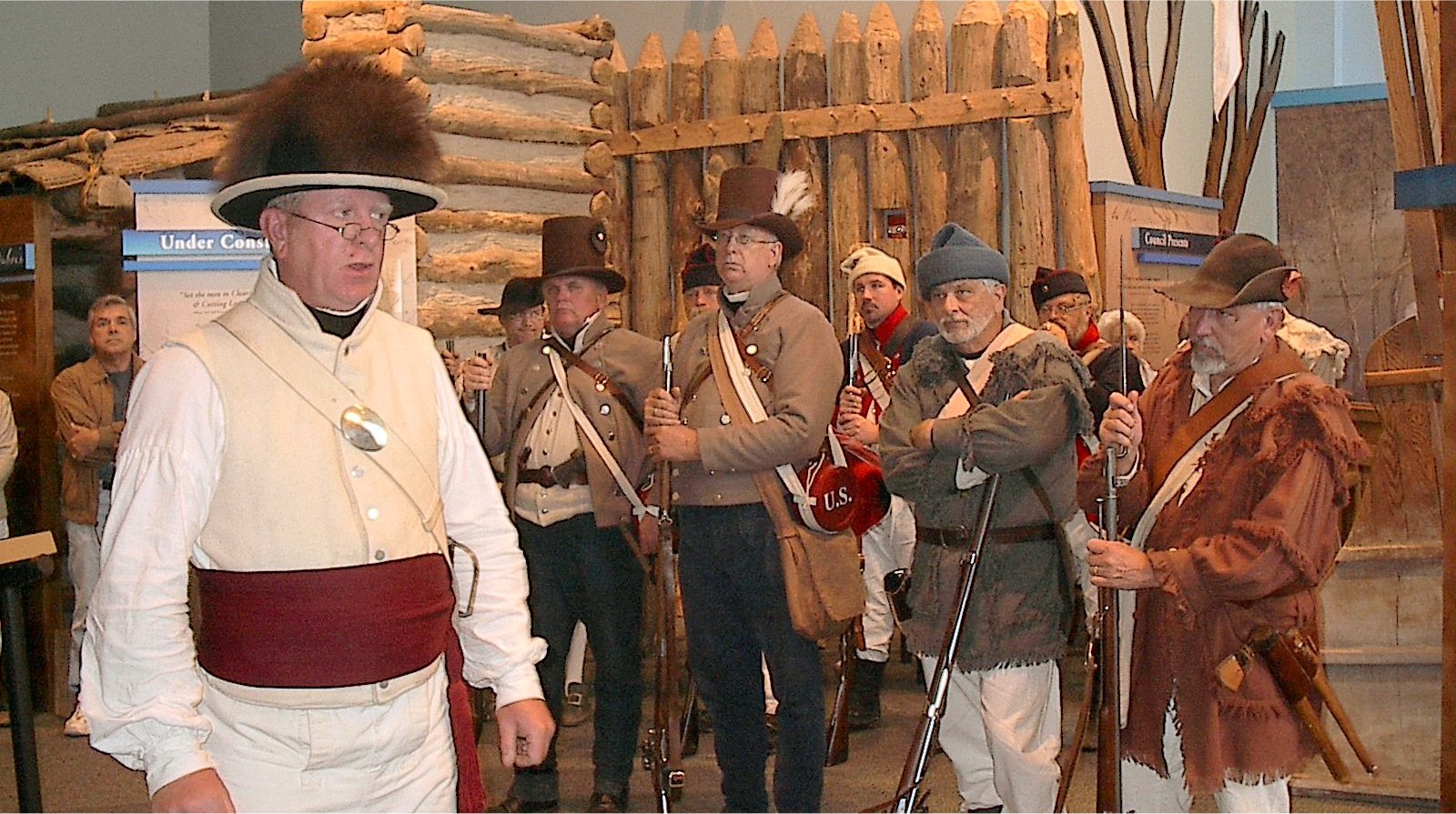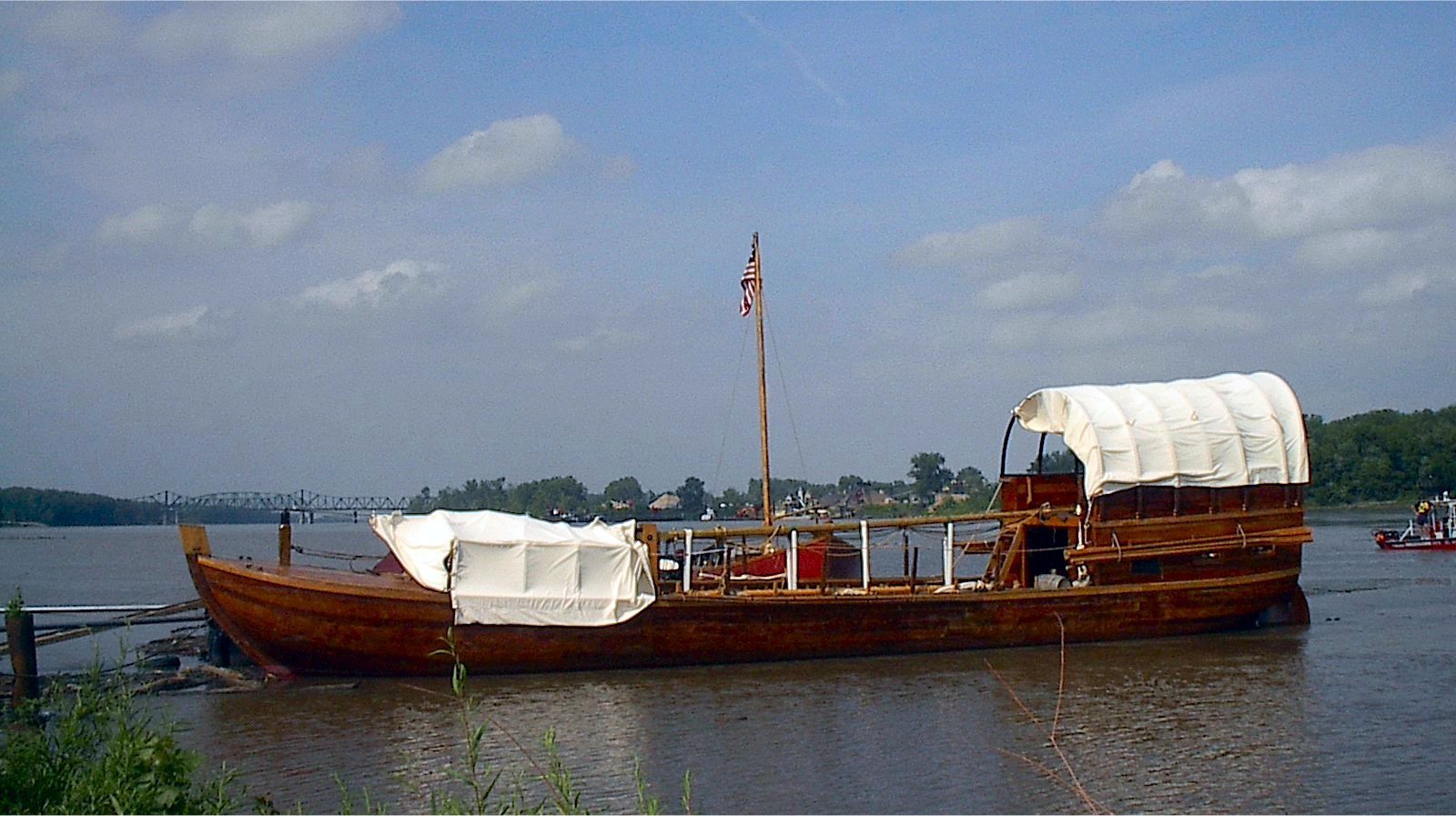On May 14, 1804 William Clark and the party of 38 men "Set out from Camp River a Dubois at 4 oClock P. M. and proceded up the Missouris" where they would meet up with Meriwether Lewis at St. Charles, Missouri. The expedition traveled in three boats: "the Party Consisted of 2, Self one frenchman and 22 Men in the Boat of 20 ores, 1 Serjt. & 7 french in a large Perogue, a Corp and 6 Soldiers in a large Perogue..." These three boats were the principal form of transportation the expedition used in reaching their winter of 1804-1805 camp at the Mandan villages in present day North Dakota.
The Keelboat
Replica Keelboat at Camp River Dubois State Historic Site
Hartford, Illinois
Keelboats were common rivercraft at the beginning of the 19th century. They were large flat-bottomed boats with a heavy timber (the keel) running down the center of the whole length of the boat to absorb the shock of running into an underwater obstruction. Before the advent of the steamboat, keelboats were the dominant boat for upriver travel. Normally a keelboat was dismantled for scrap after its journey, although the Corps of Discovery sent its keelboat back down river in the spring of 1805 to St. Louis loaded with scientific artifacts for President Jefferson.
Keelboats ranged from 40 to 75 feet long and 7 to 18 feet wide. To carry cargo the keelboat was fitted with a cargo box. This storage area occupied the entire body of the boat; with the exception of about twelve feet at bow and stern and rose four or five feet above the deck. For propulsion keelboats used sails, paddles, poles and a method called cordelling (walking along the shoreline and pulling the boat with ropes.)
Keelboats were generally built in Pittsburgh, Pennsylvania and it was here that Meriwether Lewis commissioned the boat used by the Corps of Discovery. The keelboat used by the Corps was sketched by Clark in his journal. It was 55 feet long and 8 feet wide, with a 3- to 4-foot draft. For propulsion it had a 32-foot sailing mast, 22 oars, a rudder, and a tiller for steering. Protection against hostile encounters were a swivel cannon on the bow and two smaller guns called blunderbusses. The boat included a cabin and lockers for storage that also served as walkways for poling, and had a total carrying capacity of 12 to 14 tons.
The Lewis and Clark State Historic Site features the "Cutaway Keelboat" (photo above) in its Interpretive Center. This full length replica has been cut in half revealing how the inside of the boat would have been packed with cargo.
The Pirogues
A Pirogue of the Discovery Expedition of St. Charles
St. Charles, Missouri
As Europeans began to explore and settle the lands west of the Appalachian Mountains they adapted the boats used by the Native Americans, in particular the canoe and the dugout. As more people moved west there came the need for larger capacity and new boat types needed to be developed. One of these newer boats was the pirogue (pronounced per-rogue) which copied the shape of a dugout but used the European plank-on-frame style of construction.
Lewis purchased the first of the two pirogues used by the expedition near Wheeling, West Virginia. Thought to be the "Red Pirogue", it was a flat-bottomed plank craft with a square stern, about 41 feet long and 9 feet wide, and was capable of carrying about nine tons. It was equipped with seven oars, a rudder, and a mast.
After arriving on the Mississippi, Lewis knew they needed additional men and another boat. At Fort Kaskaskia and picked up the "White Pirogue" and additional enlistees. This boat was slightly smaller and more stable than the "Red Pirogue", so, after the keelboat was sent back to St. Louis, it carried the irreplaceable cargo such as the journals, medical supplies, and scientific equipment. The "White Pirogue" was also equipped with a mast and sail.









